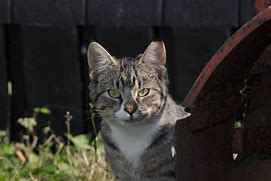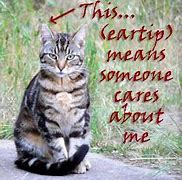
History
In June 2018, the Fort Bend County Commissioners Court approved changes to the Animal Control Ordinance, recognizing that the practice of trapping, neutering/spaying, vaccinating and returning un-owned, free-roaming community cats reduces unwanted litters of kittens, reduces the number of free-roaming community cats in the community and decreases the intake of cats into Fort Bend County Animal Services.
Further, the change acknowledges the need for innovation in addressing the issues presented by free-roaming community cats and that properly managed ear-tipped cats may be part of the solution to the continuing euthanasia of cats.
Our Community Cat Program shall be operated with the specific goals of lowering the County’s animal control costs, reducing nuisance complaints by residents, alleviating health concerns related to free-roaming community cats, lessening predation of wildlife by free-roaming community cats, reducing the number of births and reducing euthanasia of community, feral, free-roaming and stray cats.
Definitions
FBCAS accepts community cat(s) from residents of unincorporated Fort Bend County on Wednesdays between 8:00 am and 8:30 am. Cats need to be in a humane trap and covered with a towel or light sheet. We will accept one cat per address each Wednesday and ask that you provide us with a can of cat food so that we can make sure they are fed before they are released.
Community Cat: shall mean a free-roaming cat who may be cared for by one or more residents of the immediate area who is/are known or unknown; a community cat may or may not be feral.
Community Cat Caregiver: shall mean a person who, in accordance with a good faith effort to conduct Trap-Neuter-Return, provides care, which may include food, shelter, or medical care to a community cat. However, community cat caregivers are not the owner, harborer, controller or keeper of a community cat.
Eartipping: shall mean the removal of the ¼ inch tip of a community cat’s left ear, performed while the cat is under anesthesia in compliance with any applicable federal or state law and under the supervision of a licensed veterinarian. Eartips are designed to identify a community cat as being sterilized and lawfully vaccinated for rabies.
Shelter-Neuter-Return: shall be the involvement of shelters in Trap-Neuter-Return programs with cats impounded in the shelters to include, sterilizing, vaccinating for rabies, eartipping, and returning community cats to their environments.
Trap-Neuter-Return: shall be the involvement of the community in Shelter-Neuter-Return programs with cats impounded in the shelters to include, sterilizing, vaccinating for rabies, eat-tipping, and returning community cats to the environment by community members.
Program Guidelines

- Ensuring that the cat(s) are of sufficient age and health to thrive outdoors
- Minimum weight for the program is two (2) pounds
- Efforts will be made to place kittens under eight (8) weeks old in a foster environment
- Preventing or mitigating nuisances to citizens
- If the cat(s) have an unknown intake area, it is not eligible for return
- If the cat(s) are being returned to an area, we must have reliable information on where the cat lived and then be returned to its outdoor home only.
- Behavior will not be factored into decision to return due to unpredictability of behavior in a trap/shelter setting
- Cat(s) that are eligible to participate in the pilot program may be trapped by a community member and either brought to the shelter by that community member or picked-up by FBCAS
- Humane traps are available for rental from FBCAS for a $100 check refundable when you return the trap in the same condition it was rented
- All cats that participate in the program will be kept at the shelter for 24 hours prior to being returned to their outdoor home
- All cat(s) that are trapped must be trapped in a humane fashion and according to protocol.
- Community members will turn in the cat(s) to FBCAS with the express understanding that the cat(s) will be sterilized, receive a rabies vaccination, be ear-tipped and returned to its outdoor home either by the trapper or designated transporter